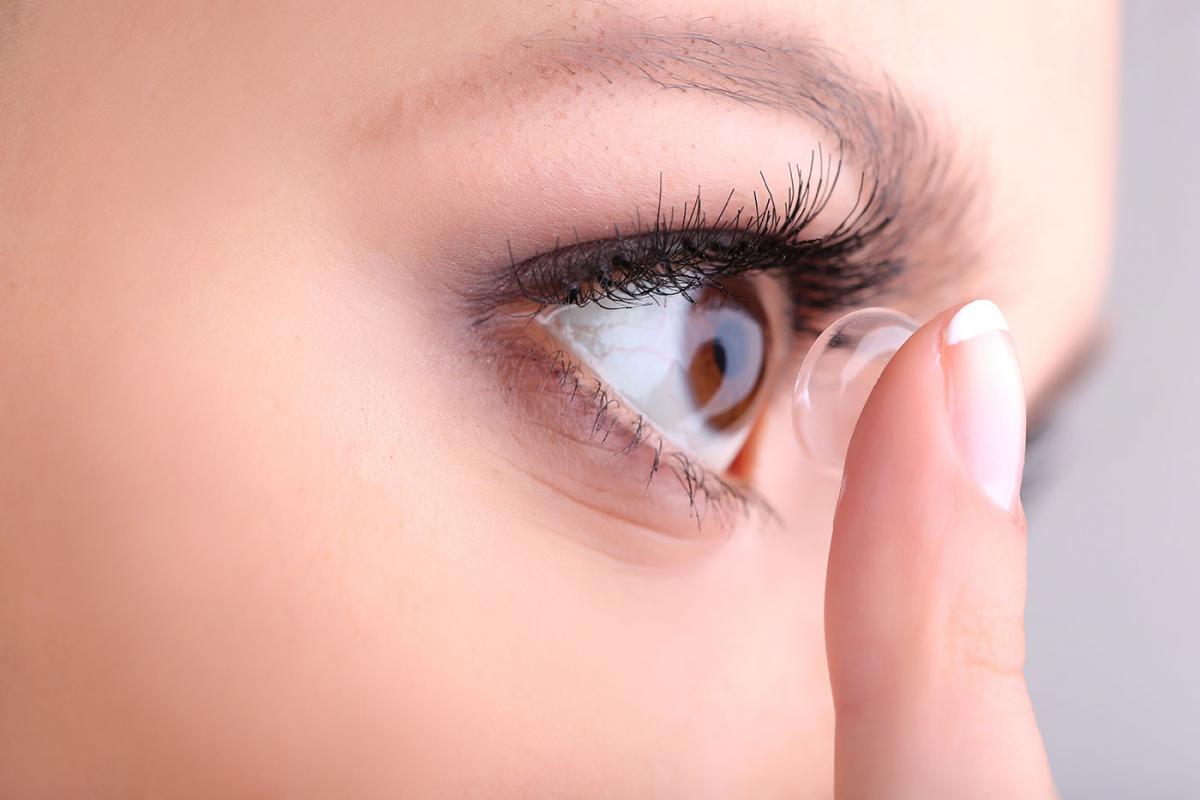Contact lenses

Contact lenses are the perfect addition to wearing glasses because they offer you more freedom in certain cases: you can go full-throttle in sports, your field of vision isn’t broken up by the frames, or you can wear sunglasses without need corrective lenses in them. We do continue to recommend combining contact use with wearing your glasses. For example, if you wear your contacts during the day, then switch to your glasses in the evening, so that your eyes have a chance to “breathe” and rest. Sometimes your contacts can tear, dust can get onto them or you can even lose them. It’s useful to have a pair of glasses around when this happens. In short, it’s not just a luxury to always have a good pair of glasses in addition to your contact lenses.
Contacts also require good support and follow-up. They have different strengths, just like glasses, but they also differ in the amount of oxygen they allow through. Throughout the years, they’ve also gained more functions; for example, there are spherical contacts, as well as toric lenses for correcting astigmatism, and multifocal contact lenses. This means that there is an appropriate contact lens for almost every visual defect.
At Claeyssens Optic, we will explain the many different types of contact lenses to you and help you determine which type is the best for your eyes. Health, service, quality and advice always come first.
Types of contact lenses
Rigid gas permeable contacts
Rigid gas permeable (GP or RGP) contacts are durable: they last longer, they’re stronger and they don’t tear. They allow a lot of oxygen through because they float on the tear film, which benefits the health of your eye. Another important advantage is that your eyes will generally have less inflammation and infections, given that this type of lens collects less impurities and bacteria. The downside to this is that they are less comfortable in the beginning and you may need a period of adaptation.
Soft contacts
Soft contact lenses are more popular than RGP lenses, especially because they are comfortable from the very beginning. They are made of a water-absorbent material, which makes them incredibly flexible and they easily fit to your eye. They fall out less than RGP lenses and are easier to take in and out. On the other hand, it is precisely this absorbent property that results in soft lenses getting dirty quicker because they mix with all manner of things, like bacteria, proteins, make-up and fats in your tears. They therefore require careful hygiene. Lastly, soft lenses will last a lot longer than hard lenses and can easily tear if not handled correctly, and they must always be stored in contact solution.
Different types of soft lenses have different lengths of use:
- one-year lenses
- six-month lenses
- monthly lenses
- two-week lenses
- daily lenses
Our biggest manufacturers are:
